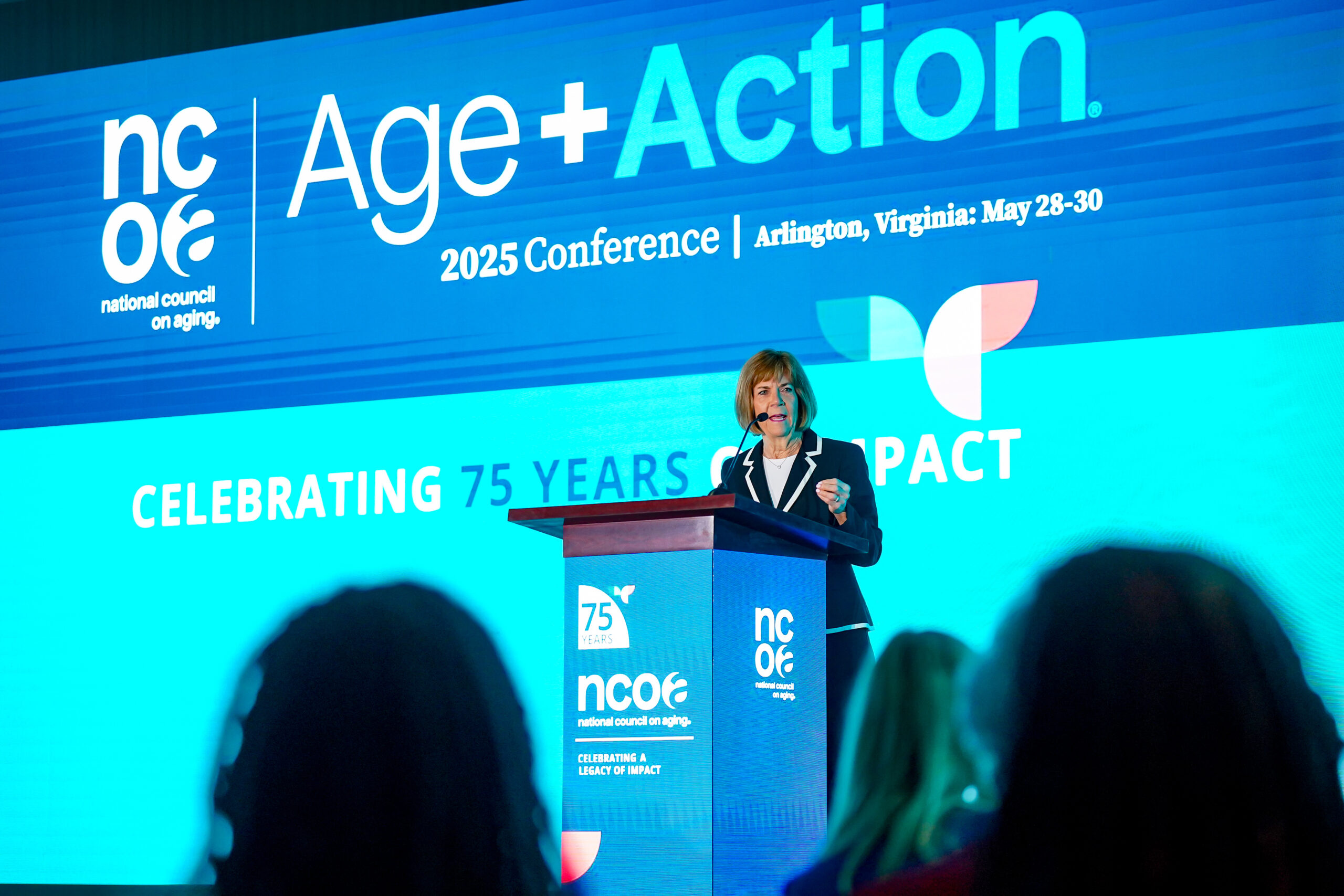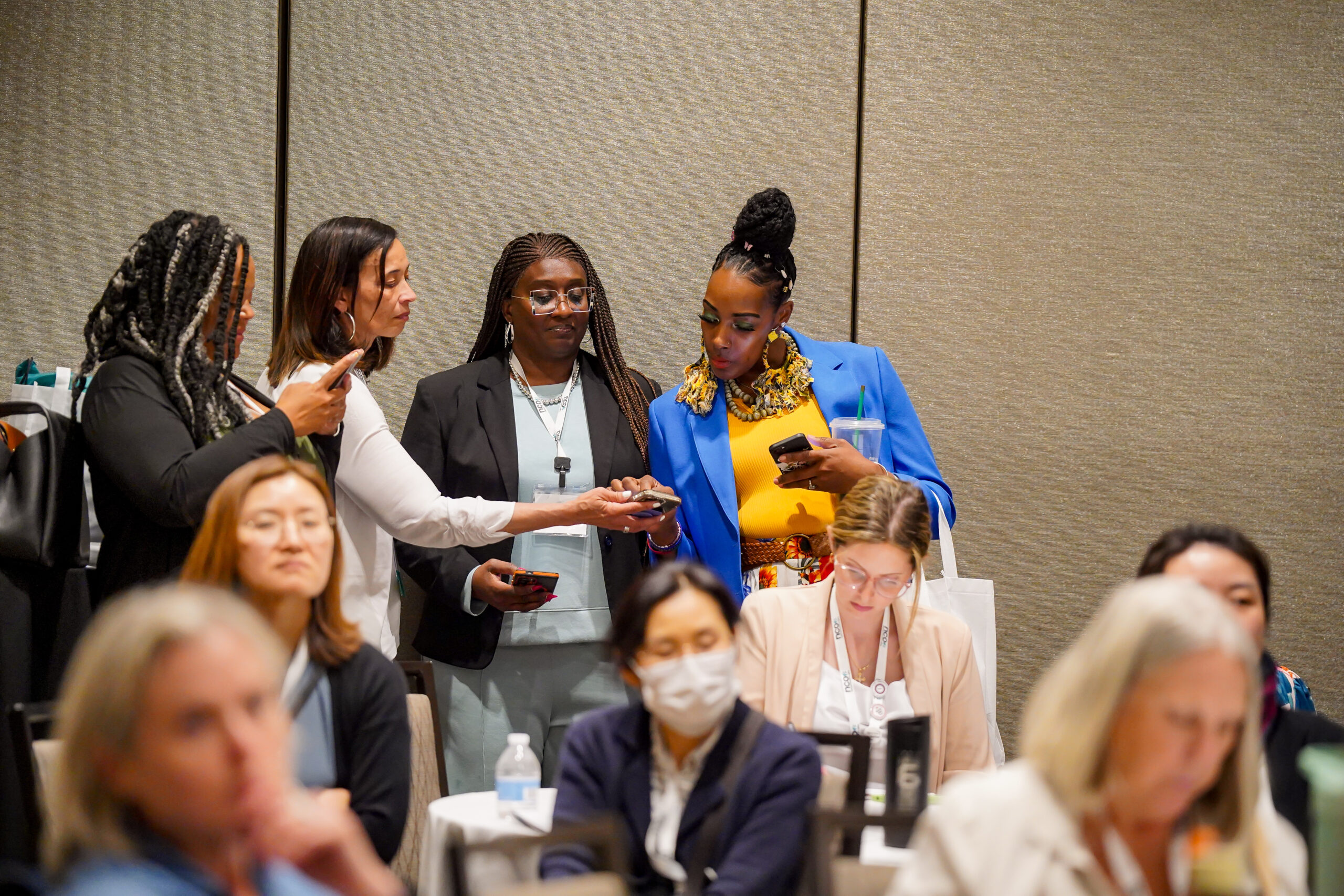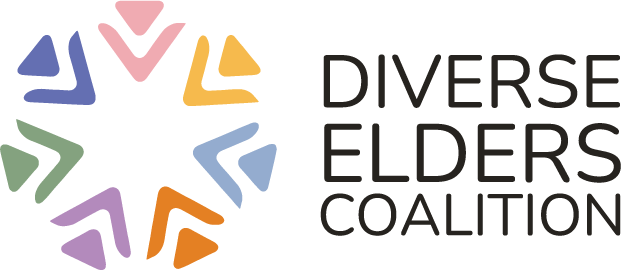By Dashel Lewis
The DEC was thrilled to attend the 2025 Age+Action Conference, put on yearly by the National Council on Aging. It’s an essential opportunity to holistically collaborate on a range of issues affecting older adults. With the change in leadership at the federal level, this year’s event had added importance given the ongoing threats to key social support services like Medicare, Medicaid, SNAP, and programs administered by the Administration for Community Living (ACL).
Day one was highlighted by a keynote address by Mary Lazare, Acting Administrator and Assistant Secretary for Aging at the ACL. The aging community in March this year was surprised and alarmed by the announcement that the ACL was due to be shuttered, with its programs due to be transferred to a new entity called Administration on Children, Families and Communities. Secretary Lazare unfortunately did not touch on the immense uncertainty surrounding the agency and its programs, instead focused on complementing the advocacy community and urging an emphasis on innovation in aging services. It was dispiriting not to hear any insight or update on the plight of the agency, with the wait ongoing to hear what will become of the ACL programs relied on by so many.

Mary Lazare giving the Keynote Address, Credit: NCOA
The rest of day one included numerous insightful sessions on a variety of issues. A notable highlight was a session focused on older adults achieving better health and economic outcomes when government services work together, closing gaps in service and easing the process of interacting with different agencies. On a similar note, an afternoon session presented the benefits of automating benefits applications for individuals already approved previously. The theme of the day was benefits not only need to be expanded, but also evolved in terms of their administration, easing access in the process.
Day two kicked off with a main stage discussion on the dangers of isolation and the benefits of maintaining vibrant social connections. This is an evergreen issue but one with added importance as we continue to grapple with lost connections from the COVID-19 pandemic. The morning concluded with an important conversation examining how many in our communities aren’t aware of programs available to help them with health-related costs. The Pan Foundation offers a free app called Fund Finder, which helps track upwards of 200 patient assistance programs.

A group of people accessing the Fund Finder app, Credit: NCOA
The final day closed with a main stage session emphasizing the increased importance of digital literacy and closed with a session on finding new innovative ways to improve community outreach.
This year’s Age+Action reflected the sobering reality that funding from the federal level is in question, which presents new threats for a range of communities reliant on programs and services that would struggle to keep the same quality and reach if resources were cut. In the face of that reality, it’s critical that our existing state and local programs maximize effective, culturally competent community outreach, ensuring equitable access. It’s clear that far too often services are not reaching those who need them.
Throughout the three days there were also countless stories and examples of individuals thriving due to support they received from Medicare, Medicaid, or countless other programs run through their state or county. It served as a timely reminder that on the federal level, the advocacy community must continue pushing for complete funding of the range of programs providing essential and irreplaceable support to the aging community.

A session at the Age + Action conference, Credit: NCOA
